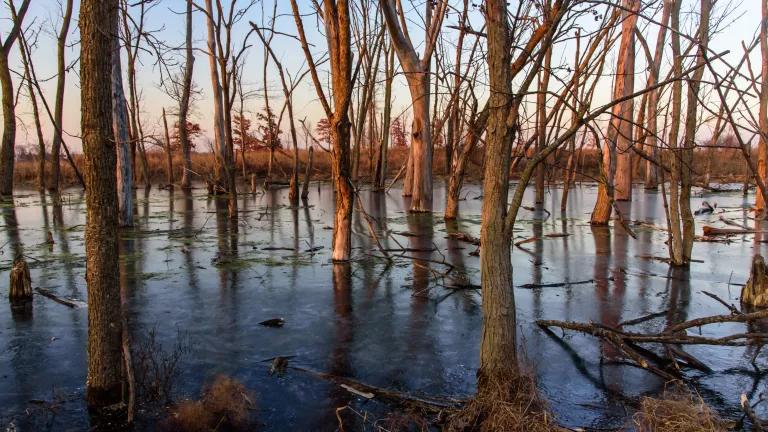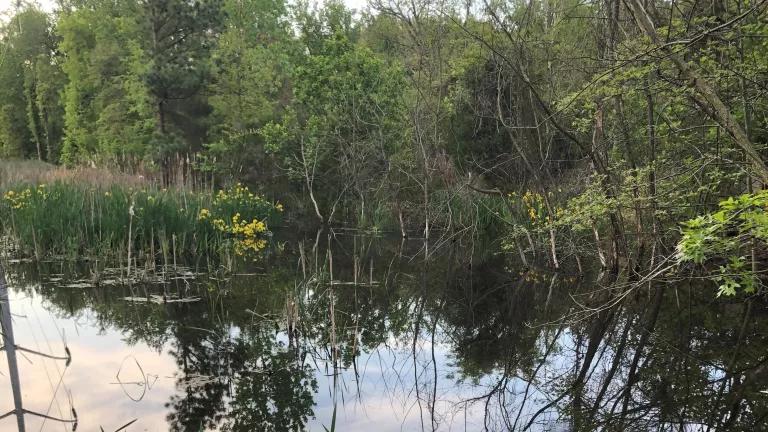Philadelphia shows the nation how to cleanup waterways, improve quality of life with green infrastructure
A large part of my work here at NRDC lately is focused on boosting investments in smarter water practices to curb water pollution and improve the health of our nation’s waterways. One of the most exciting parts of my job has been working with the city of Philadelphia on behalf of NRDC, along with local partner organizations, which has been showing the rest of the country how it’s done. In recent months I’ve had several opportunities to travel there and meet with key decisionmakers from the city, as well as state and federal regulators. Philadelphia has enthusiastically embraced “green infrastructure” methods to address its problems with polluted storm runoff and sewage overflows (as this great new video from EPA details) and restore its local waterways.
Philadelphia has proposed a first-of-its-kind, 20-year plan for more than $1 billion of green infrastructure investments. Through a combination of incentives to private property owners, requirements for new buildings, and public investments to retrofit city streets, parks, and other public property, Philadelphia aims to deploy the most comprehensive network of stormwater green infrastructure found in any U.S. city.
Polluted runoff from our cities and suburbs remains one of the biggest (and most rapidly growing) sources of water pollution in the United States, fouling our urban waterways, beaches, and other coastal waters with disease-causing bacteria, excessive nutrients that breed algae blooms, toxic pesticides and other chemicals. For cities like Philadelphia that have “combined sewer systems” (that is, systems that carry both runoff and wastewater from homes and businesses through the same set of pipes) this even results in dumping raw human sewage into surrounding waterways when it rains, as the systems become overloaded with the combined volume of runoff and sewage.
The best way to address this problem is to implement more green infrastructure, which prevents runoff from reaching the sewer systems in the first place. Green infrastructure (also known as low impact development) is a set of urban design techniques that replicate the way nature deals with rainwater – using vegetation and soils as natural sponges for runoff – rather than relying exclusively on the concrete pipes and holding tanks of the past. Green infrastructure techniques such as green roofs, roadside plantings, rain gardens, and rainwater harvesting not only improve water quality -- they also transform rainwater from a source of pollution into a valuable resource that helps to literally green the urban landscape, cool and cleanse the air, reduce asthma and heat-related illnesses, cut heating and cooling energy costs, create urban oases of open space, and generate green landscaping and construction jobs. Studies show that such greening efforts can even help make local residents happier and more community-minded and contribute to lower crime rates.
And it’s a wise investment. The concrete infrastructure we are used to relying on in our water systems is expensive, while green infrastructure is generally the most cost-effective and sustainable approach to address these pollution issues. The bulk of the new EPA video about Philadelphia I mentioned earlier profiles a green builder in Philadelphia that is successfully – and profitably – using green infrastructure techniques (and energy-efficient designs) in projects around the city.
But it’s not just the private sector getting in on the act. In the video, Howard Neukrug, Director of the Philadelphia Water Department’s Office of Watersheds, explains that the city government’s transformational approach to water management is built around this green approach. Critically, he explains that by treating rainwater as a valuable resource, the city will save “money and energy [that would otherwise go towards] managing and treating rainwater that becomes a waste product in our sewer system.”
(In Philadelphia, as in some other places, the combined sewer overflow problem is so great that this green infrastructure approach must still be coupled with targeted upgrades to existing sewage treatment facilities. But much of the investment that would otherwise go to “gray” infrastructure can be re-directed to more cost-effective green solutions, which, unlike traditional tanks and tunnels, also provide multiple benefits to the urban environment.)
In addition to Philadelphia, NRDC has been working to boost green infrastructure investments nationwide to improve water quality – from the local to national levels. Indeed, Philadelphia’s ambitious plans reflect a growing trend of cities across the nation that are recognizing green-infrastructure practices as superior to conventional methods of curbing stormwater pollution and sewage overflows. In May of this year, for example, EPA announced an agreement with Kansas City that’s intended to support a similar strategy there. And in New York, I’ve been working with a coalition of local groups for several years to get NYC to adopt a comprehensive green infrastructure approach to its massive combined sewer overflow problem (the city has begun laying the groundwork and we’ve seen encouraging signs that new leadership at the city’s water and sewer agency is looking to make green infrastructure a signature issue for the agency).
The scope and enthusiasm of Philadelphia’s efforts puts it at the forefront of this movement – pioneering a broad investment in these cost-effective measures that can cleanup waterways and dramatically improve the overall health and quality of life of the city at the same time. The rest of the country would be wise to take notice.




